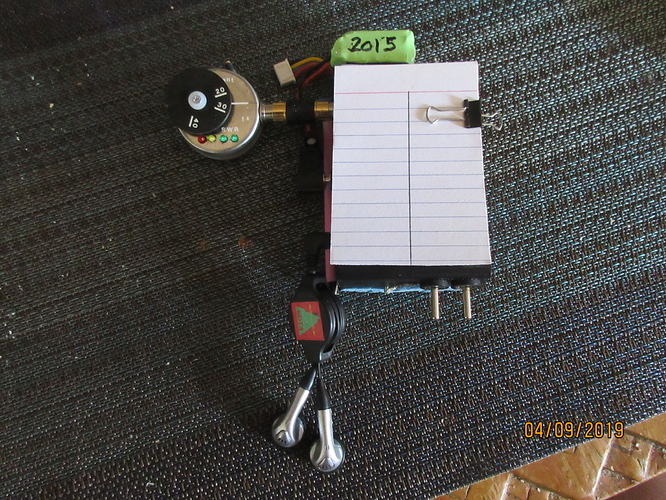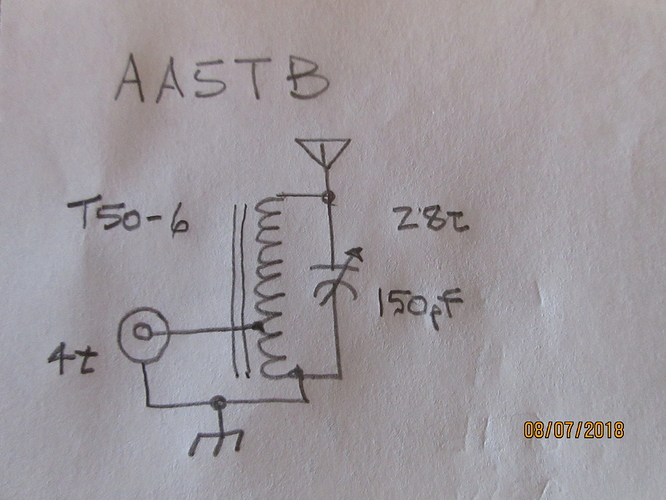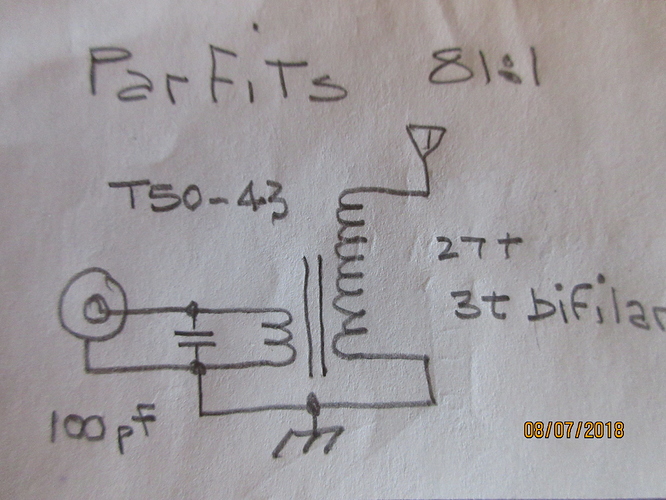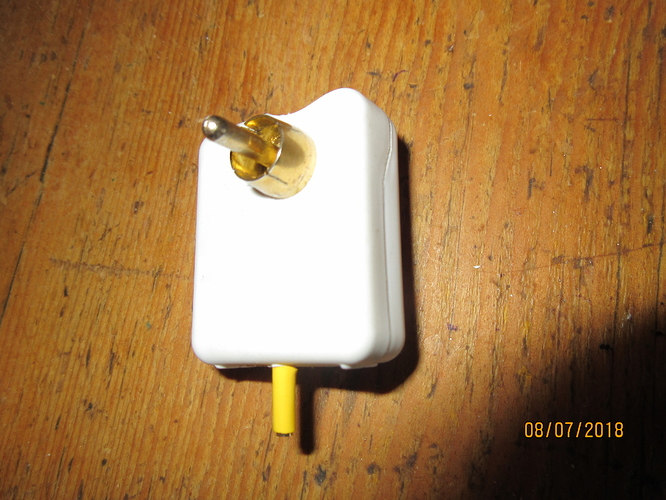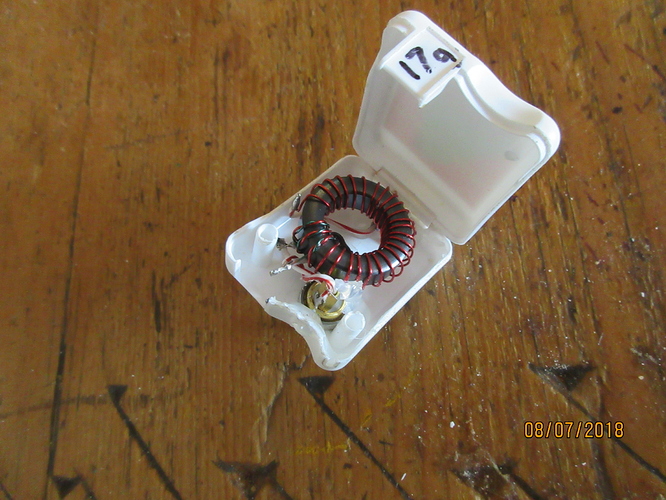My tests have shown that the loss from the broadband impedance transformer by Parr is too low to make any difference. However, the loss using the AA5TB style of tuned impedance matching device produces only half the loss of the broadbanded version, and it can deal with individual site variations better. I build one so small it fits into a dental floss case and weighs less than 20 grams. It is the widget on the left. I was able to build the tinySWR indicator right in. The one shown is built into a case that once had some exotic salt in it. Note I use NO feedline. The end of the EFHW wire has no current on it so I just plug the wire right into the tuner. fred - kt5x
There is no single network that does everything (and does it efficiently). The design of antenna matching units requires many factors to be taken into account including the ease of use.
I use three LiFePo4 batteries to start with, tune my antenna tuner, and then go to four cells. There’s a risk of accidentally tuning up on all four batteries during all the excitement, though. Three batteries are my comfort zone.
There’s a 3.7V charge limit for these batteries, which would equate to 14.8V for four cells in series, but I would never see that voltage on the mountain.
There is a group named ATSPRINT on groups.io which was originally on yahoo groups and originally about Steve’s AT series, but then moved with Steve’s newer designs like the MTR series. That is a good place to ask questions about these radios, rather than this forum. Some of the members are here too, a lot of familiar names and callsigns there, but it’s sometimes good to find out what the hardcore MTR users are doing. A new group was started by Steve on Groups.IO named KD1JVdesigns and that has taken over the role of ATSPRINT somewhat. (AT refers to the Appalachian Trail in the US, running from Georgia to Maine.)
This question could be asked on either of those groups and would produce many suggestions.
Andrew VK1DA/VK2UH
The only previous post you have is:
which doesn’t really explain why it is a bad PA design. I am also curious why you think its so terrible.
Any PA (especially one designed for portable operating) that can potentially fail under conditions of adverse VSWR is a bad design. This the whole thrust of the thread.
I suppose that’s true. Need to do more research into what networks are used for which scenarios.
I’ll check that out. Thanks!
I have run my MTR into a SHORT (twisted feedline) for quite a while to no ill effects.
Etienne-K7ATN
Hi Fred, is the tuner in the photo built into a metal box (exotic salt container)? Or is a it a metaliised plastic? Curious if it helps avoid hand-capacitance when tuning?
73
Geoff ZL3GA
Here are the skematics for the two matching units I use to match end-fed halfwave antennas from 15M to 40M. Tune the wire and always deploy it the same way with the same pole if using the fixed broadband unit by Parfits. The tunable approach CAN be tuned by ear listening to band noise, I found by tests that I always got it to 1.2:1, or use any of several SWR indicators such as the tinySWR unit by DK2IT for which there is a circuitboard available from OSH PARK.
above is one using a T-80-43 core built into a dental floss case.
My tests suggest that the tunable version introduces a los of about .5 DB, while the broadband one about .7 DB WHEN SWR is low. Neither loss is of any consequence.
73 fred KT5X (aka WS0TA)
The MTR3B (at least mine, this may depend on firmware level) has a TUNE menu option which reduces the transmit power to protect the finals when tuning. It also puts out a continuous signal as opposed to a string of dits or dahs if you’re using the internal keyer and tuning by sending.
I have an Elecraft T1 to go with mine, but often don’t pack it preferring to carry the resonant antenna for my expected use. It’s ultra-light that way, but if there’s a contest on my chosen band when I’m on the mountain it may be harder to make contacts.
